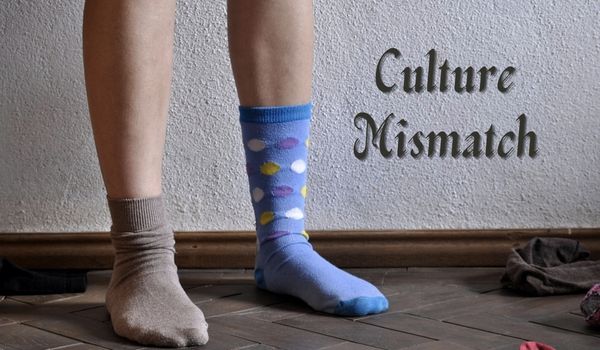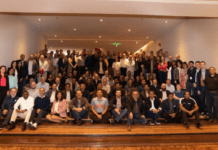Bringing one’s whole self to work is one of the proven ways to feel more comfortable, confident and engaged in any given role. It simply means being authentic, honest and true to oneself at the workplace. This ultimately leads to more positivity and productivity at work.
However, when new employees join a company, there’s always a mismatch somewhere. What should the employees do in such situations? Should they try to fit in, or just ignore the mismatch in culture or behavioural traits?
“The employee who finds a mismatch on account of newness, should be pragmatic and mature enough to go through the process of settling down in the new workplace in a patient manner,” believes Shailesh Singh, CHRO, Max Life Insurance. Every new place has a newness and the new employees should realise that settling down is a natural process that takes time.
“The employee who finds a mismatch on account of newness, should be pragmatic and mature enough to go through the process of settling down in the new workplace in a patient manner.”
Shailesh Singh, CHRO, Max Life Insurance
“New entrants to an organisation always wish to put their best foot forward, and hence, it’s always a good practice to try to understand and fit in with the company culture to some extent,” Mukul Harish Chopra, CHRO, ConveGenius suggests. It creates a positive workplace culture, and hence, contributes to job satisfaction, better working relationships with colleagues and overall success in the role.
However, “There is always a mismatch somewhere whenever new employees join,” shares Anil Mohanty, senior HR leader. “Hence, they are left with no option but to try and fit in or switch to a different role, depending on the seriousness or level of mismatch”.
The extent to which new employees can fit in depends on their level of seniority and experience as well.
“At the entry level, a significant part of the work is execution oriented, and therefore, there may not really be a clash of values. Even if there is, it may not be that evident,” points out Singh. It does not affect the day-to-day work life of the employees.
“In entry-level roles, matters may not be that tricky when it comes to culture,” agrees Mohanty. The new entrants are not fully aware of the culture or the work expectations. Even complete role clarity may be lacking. Since they are just starting off, they will not have enough time to even be able to judge the culture. Even if they have some expectations from the culture, and they can’t seem to fit themselves in the new workplace, they don’t shy away from changing organisations quickly as they have options.
“It’s important for the company to do a capability fit along with a compatibility check. With more jarring at the top or the senior levels, the new entrants start feeling uncomfortable in the current setup. Hence, for no fault of theirs, even when they wish to bring their whole selves to the new workplace, it becomes more challenging for them to do so.”
Mukul Harish Chopra, CHRO, ConveGenius
However, “At senior levels, individual beliefs have been shaped in a certain way and a certain amount of flexibility is lost,” points out Singh. Hence, unless one is really a constant learner and agile, one will find it difficult to adjust in certain situations. While it may cause dissonance, it is really up to the employee to judge the depth and seriousness of that disconnect.
Also, “Financially stable employees may not consider trying to fit in as an absolute necessity for working in an organisation. However, for the financially unstable ones this may just be the last resort,” Mohanty explains.
How to handle
The work environment post COVID went through quite a few stages, from The Great Resignation to quiet quitting, and now rage applying. However, what is common and evident is the reduction in employees’ engagement with the company. When that happens, it’s a matter of concern. While some of it is natural, in some cases, it becomes the moral responsibility of the enterprise or organisation to intervene and handle this disengagement.
“Culture fit is important, but it should not come at the expense of individuality and creativity. When people try to fit in completely, they may lose their authenticity and individuality. This can be interpreted as their inability to bring their whole selves to work. The delicate balance between adapting and staying true to oneself has to be achieved.”
Anil Mohanty, senior HR leader
Chopra points out, “It’s important for the company to do a capability fit along with a compatibility check.” Since the cultural fit becomes much significant at the senior levels, the new entrants start feeling uncomfortable in the current setup. Hence, for no fault of theirs, even when they wish to bring their whole selves to the new workplace, it becomes more challenging for them to do so.
“The new employees are aware of the performance culture and would want to give their best, but it is up to the organisation to be able to leverage that desire and drive,” adds Chopra. New entrants always wish to perform their best, and therefore, the organisation should be capable of channelising their energies and leveraging this talent. If the organisation observes them falling short in some area, they should see how they can provide the required support.
“If an enterprise succeeds in letting people be themselves and ensuring they are fully engaged, the employees deploy discretionary effort in terms of creating value, for the enterprise as well as for the customer. Hence, it’s in the enterprise’s interest to allow people to be themselves,” opines Singh.
“The whole focus on diversity, equity and inclusion (DEI) is really to enable people to be themselves, and create a workplace reflective of diversity,” points out Singh. Enterprises that do not realise this, fail to see that it’s just a matter of time before they are forced to eliminate people who are not themselves and whose ability to engage has diminished over time. Hence, it’s important for the organisation to help employees release their genuine selves.
It is also important for the company to “understand the nature of business and the type of people you want, with the relevant soft skills,” points out Chopra. “The hiring needs must be clear for the specified role, otherwise, the companies will end up with the wrong hires,” he adds.
Mohanty agrees, “Employees can become dissatisfied when the role doesn’t match the responsibilities they’re given.” This also lowers the engagement level and makes them doubt their decision to join the company.
Hence, it’s more up to the organisation to create a work environment and workplace where people can be themselves. However, Mohanty believes that an employee must try to adjust in the new place, as it is not really possible to switch multiple times and there’s no guarantee that they will find their favourable environment at a different place.
Employees’ responsibility
New entrants must first try and understand whether the sense of mismatch is due to newness alone. If they can see themselves getting aligned with the organisation’s values, then they must make an effort to overcome the mismatch and try to settle.
However, “If the disconnect is strong and major, then it’s a big concern. It prevents the employees from being themselves. Then, it becomes a matter of aligning one’s own values with that of the organisation,” opines Singh. If the concerned employees are senior, say a CEO or CXO, they may even be able to influence the significant authorities and reshape the organisation and the teams within. If that is not the case, they may simply have to part ways in case of an extreme situation.
Although complexities increase at the senior level, Mohanty observes that “the only options they have is either to leave or to adjust, if they’re choosing to stay with that organisation.” The two (employee and the organisation) must align in due course and if they don’t, it will be hard for the employees to find themselves or feel self-fulfilled in terms of work and joy at the workplace.
However, as Mohanty puts it, “Culture fit is important, but it should not come at the expense of individuality and creativity. It’s about finding a balance between fitting in and standing out.” When people try to fit in completely, they may lose their authenticity and individuality. This can be interpreted as their inability to bring their whole selves to work. The delicate balance between adapting and staying true to oneself has to be achieved.
Value our content... contribute towards our growth. Even a small contribution a month would be of great help for us.
Since eight years, we have been serving the industry through daily news and stories. Our content is free for all and we plan to keep it that way.
Support HRKatha. Pay Here (All it takes is a minute)







































